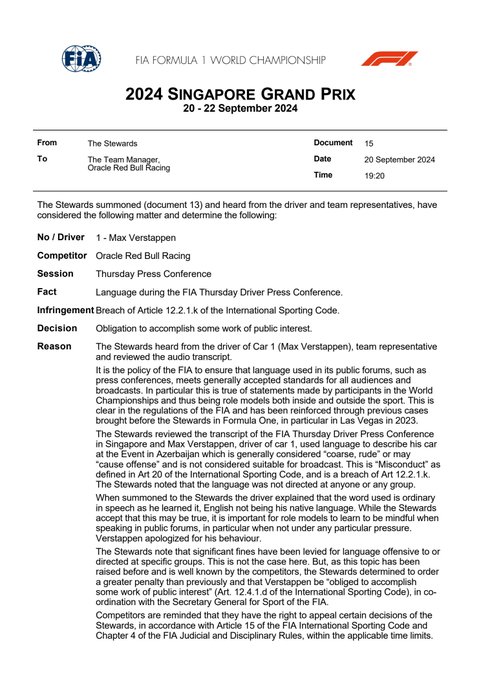Paa wrote: ↑20 Sep 2024, 13:11
Sergej wrote: ↑20 Sep 2024, 13:09
search wrote: ↑20 Sep 2024, 13:03
After the session, Marko said that their Austin upgrade should bring them back on winning ways.
Based on the numbers, it will add a lot of downforce without losing ground elsewhere.
Today, most of their time lose came from the 90° corners in sector 2, which he expects to be reduced with some setup adjustments.
all the recent failed upgrades were "based on the numbers", so promising words but I'll keep my hopes at bay till Austin sunday evening
I think this time they mean real life numbers, what they learned from things measured on track.
But yes, good to hear positive news, but I'm a bit worried until see track validation.
I think the lesson you should take from this regulation set is that once you start having correlation issues, they are VERY difficult to resolve. Mercedes and Aston Martin have had countless false dawns, and it took Ferrari several years of correlation issues to get back to winning ways.
Aston Martin and Mercedes have both reverted to older specs a bunch of times to try and figure out what is going on, thought they have solved it and then brought upgrades that caused issues to reappear. Even if they figured out what development direction caused issues, there is no guarantee that going back to the stable baseline and developing in another direction won't cause other issues to present themselves.
My personal guess is that there isn't really one cause of these correlation issues, instead there are tons of different development directions from a stable car that lead to correlation issues. So even if you manage to figure out what caused your instability. Pursuing a different development direction might not necessarily mean you won't run into correlation issues anyway.
McLaren and Ferrari both seem to have resolved their issues by eliminating the floor details that tend to lead to issues. They have realized that they have no clue how to actually predict floor behaviour, and reverted to optimizing the hell out of a relatively simple floor geometry, presumably giving up a bunch of load in order to eliminate variables. Ferrari has more or less removed all of their floor kicks and small radius geometry in order to get more predictable behaviour. McLaren hasn't gone as far, but have pursued a similar direction. Meanwhile Red Bull and Mercedes have been running super complex floors with a bunch of kicks and other complex floor geometry. These floors may well generate more load, but they're so incredibly complex that their real world performance becomes nearly impossible to predict.

